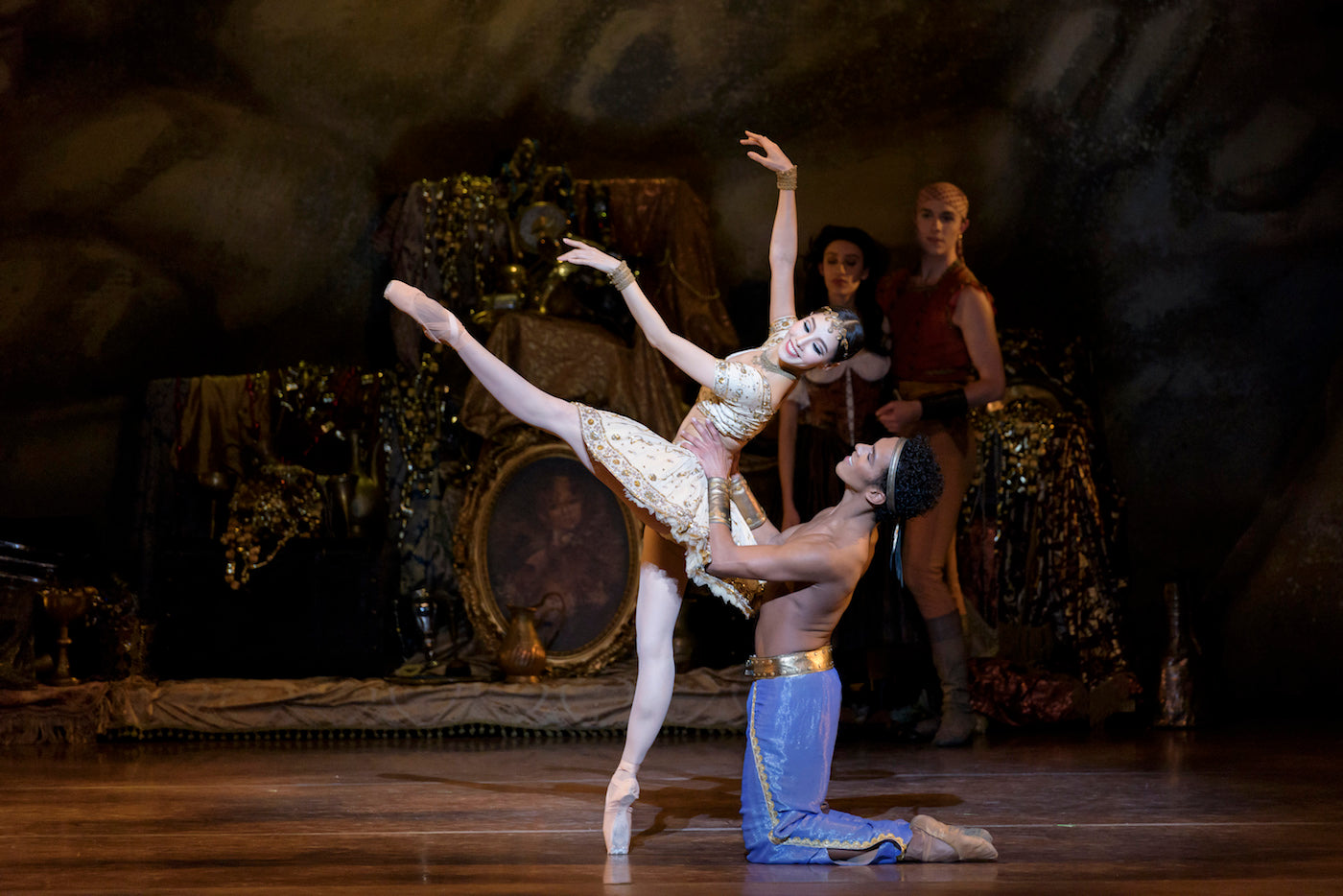In short, the plot follows the troubles of a love-struck pirate, Conrad and a wealthy slave trader’s beautiful adopted daughter, Medora, as Conrad struggles not once, but twice, to free Medora from the Pasha’s harem, into which the merchant has sold her along with several slaves. With moments of swoon-worthy pirate revelry to romantically subdued adagios, “Le Corsaire” offers a delightful visual and emotional array for all ages—with some clever moments of frisson woven in for good measure.
The story is a fun one, and it is clear that all involved—choreographer to performer to designer—dove into the narrative with a thirst for both historic accuracy and modern creativity. Roger Kirk impressively transported the audience into a real-life picture book through his elaborate sets and costumes, opening each act with a downstage mist-like scrim that shifted from video projection to backlit window, with a large oval detail framing the breathing tableaus onstage much like an opening illustration to an old-fashioned chapter book. Indeed, this is how the crew first greets us, rocking on a small ship with projected clouds and lightning creating a mood that is both grand and ominous. Later on, this versatile oval window peers onto a much more peaceful scene instead, with a tucked-away island offering relaxing solace to the escaped Medora. From start to finish, these sets and glimmering costumes keep us enrapt in a world far different from our own.
Choreographically, Liška’s adaptation is actually a departure towards the original, rather than away. With painstaking reconstruction efforts led by Doug Fullington, Liška’s “Le Corsaire” successfully returns us back to Petipa’s classic work, as close as possible. The result is a captivating choreographic work—at times showcasing repetitive phrasing in the classical style, yet equally bursting with quick footwork, comedic pantomime, and grand pas de trois. This intricate choreography, coupled with the immersive scenery, creates an overall full-bodied production.
Sadly, after a lively first two acts, the third begins with promise for continued adventure, only to leave the audience wanting. Aside from a few momentary advances in the plot (Medora being forcibly returned to Pasha’s harem and the pirates sneaking into the palace to save her once more), the third act falls victim to the sequence that most traditional ballets do: focusing more on the formalities of highlighting technique than on narrative. Still, the famous pas des Odalisque that begins the scene is nothing if not polished, with a mesmerizing affinity for both speed and buoyancy. Dancers Dusty Button, Lauren Herfindahl, and Addie Tapp should be commended for their performance in these roles. Still, this act’s downfall is not simply due to a slowed plot—it is due largely to the sudden introduction of so many young students to the stage. Carrying flower-covered archways and garlands, viewers watch as the scene fills with dancers of all ages and skill levels, while the Slave and Medora dance through them evoking the all-too-often-seen “Nutcracker” Waltz of the Flowers. Had these dancers been previously utilized (perhaps in the opening village scene), this sudden shift from professional to amateur may have better flowed. Instead, it greatly changed the tone of the production, taking viewers from an exalting performance to the realm of a student recital.
A disappointing third act aside, Liška’s “Le Corsaire” after Petipa was masterfully accomplished, with Boston Ballet’s dancers clearly reveling in their character-driven roles—an excitement palpable for the audience as well.









comments